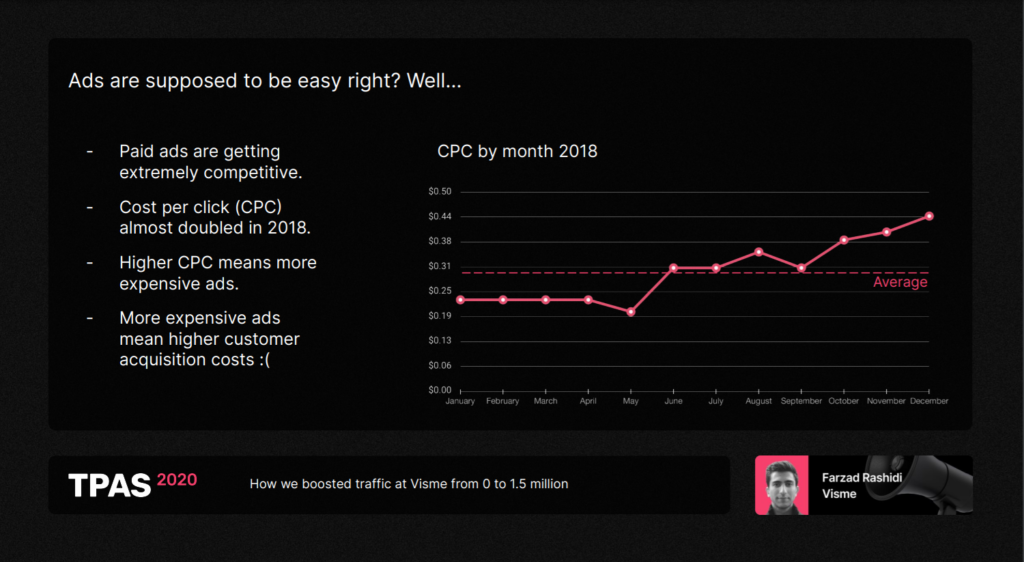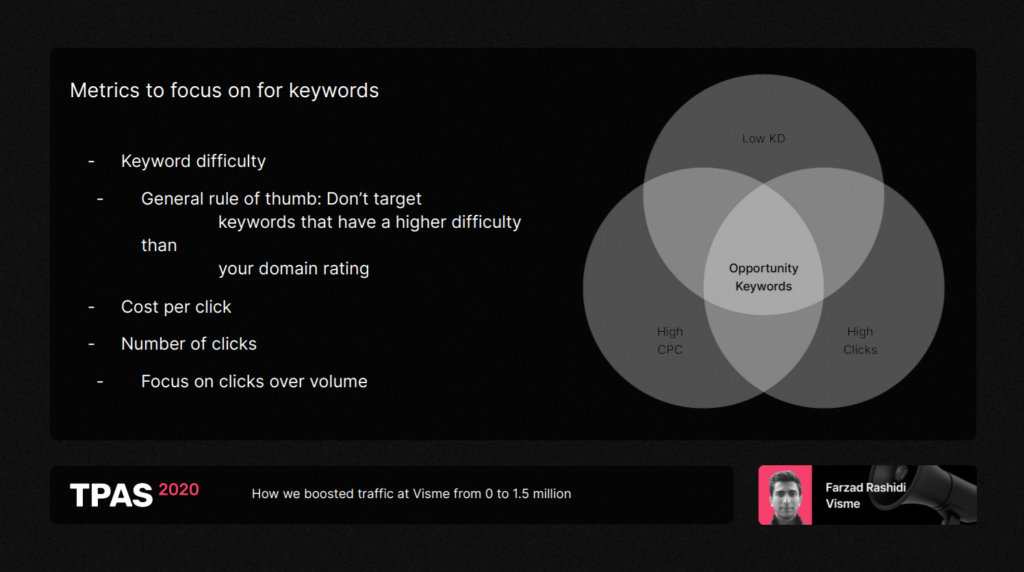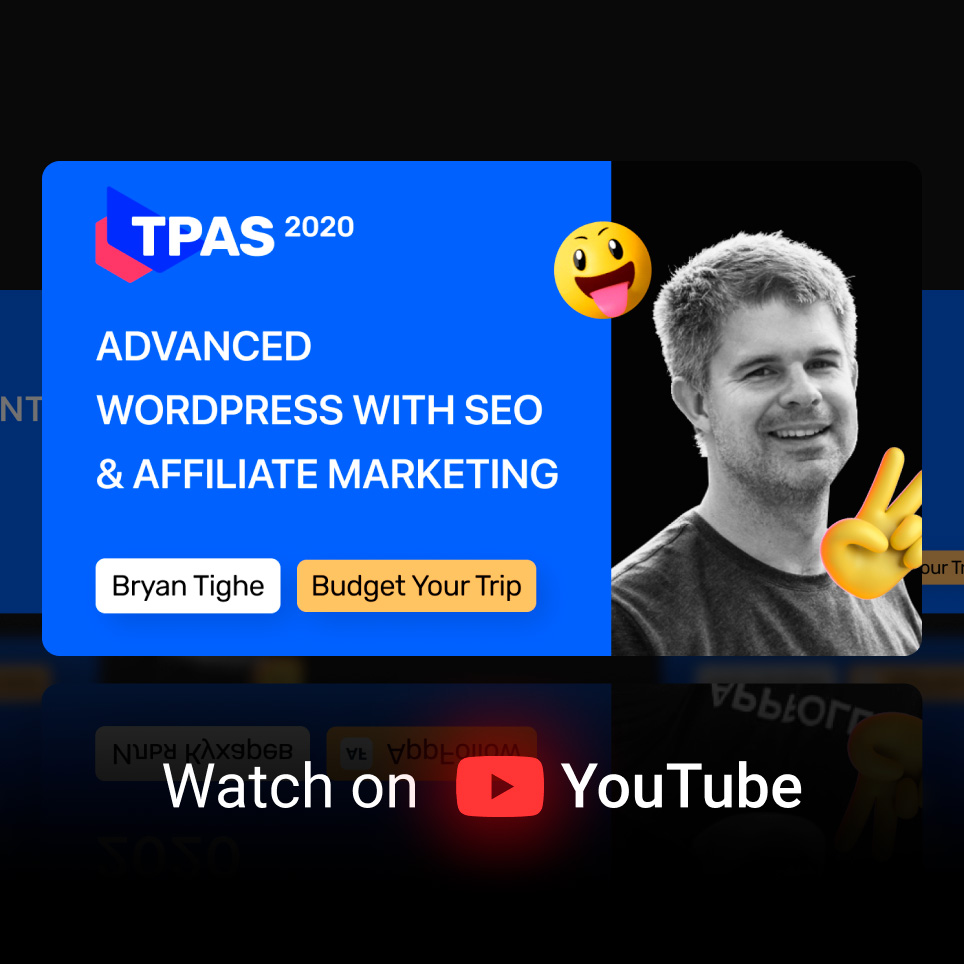The right approach to content marketing
Many businesses make the same mistake of thinking that their blog itself is good enough for content marketing and that people will somehow discover it. What you should really be doing is writing about things that people are actively searching for and positioning yourself on platforms where they do their research (typically Google).
The goal of content marketing is to build an evergreen funnel to generate leads and sign-offs without paying for the acquisition of every single customer. In the webinar [2:56], Farzad compares content marketers with beekeepers. There are two ways for them to make honey: chase after every single bee in the jungle or build a little garden where bees will organically come on their own and keep expanding this garden over time. The same goes for content marketing. If properly applied, content marketing will generate an evergreen flow of organic traffic to your website without the need for you to chase after every single customer.
SEO vs. Paid ads
It’s a common belief that advertising is an easy way to growing a business. While ads can boost website visits, this only lasts so long. When you stop investing in the campaign, customers will stop coming. In addition, paid ads are getting more competitive and expensive.
However, in some cases, advertising turns out to be useful, including for retargeting. If you want to get back visitors who left your site without taking any action, targeted ads are perfect.

SEO takes more time, but is also more efficient in the long term. Farzad cites the example of Canva, a graphic design platform, which raised over $300 million for advertising purposes, while Visme managed to acquire six million users with an incomparably smaller budget by growing organic traffic. This works because users normally ignore ads and click organic search results [6:23].
The same SEO techniques were used for growing the Respona website. The team mainly focused on keyword research and content promotion and, within less than a year, the site managed to get to the top of Google’s search results for the “link-building software” search query.
Focusing on the right content
Farzad and his team mainly use the following three types of content for promotion at Visme and Respona:
- SEO driven content. This type of content answers common user questions and drives traffic to your site using “top of the funnel” keywords. These can be posts like “The XX best tools” or practical comprehensive guides (eBooks or long-form resources), etc. This content is also important for affiliate campaigns.
- Link building content. Original content with a viral element: infographics, practical guides, etc. It is created for the purpose of getting links to relevant landing pages.
- Bottom of the funnel content. User-focused content that targets people looking for a product that can solve their visual communication needs. For example, case studies and tutorials.
A lot of people only focus on “bottom of the funnel” content. However, SEO-driven and link-building content are more important as far as they drive more organic traffic to your site.
Researching keywords
Now that you understand the structure, it’s important to start with a generic keyword relevant to your topic, or so-called opportunity keyword. These keywords should have low competition, generate a high number of clicks, and yield a high cost per click, which is indicative of commercial intent.
To find search suggestions, use tools like Ahrefs, SEMrush, Ubersuggest, Majestic, etc. Look up the parent keyword and check its variations. In the webinar [18:16], Farzad explains how to research keywords and prioritize them using the so-called opportunity score formula.

Building links
Now, to attract traffic, it’s important to implement both on-page and off-page SEO. While on-page factors include the creation of quality content and everything you can do on your site, off-page SEO is mostly comprised of getting backlinks from other resources. Farzad highlights that only relevant and authoritative sites within your niche will get you backlinks that matter for Google. Thus, links from governmental or well-known websites would have the biggest value.
To that end, there are four groups of people you want to reach out to:
- People/experts/companies you have mentioned in your articles
- Those who have written similar articles
- Those who have shared similar articles on social media
- Those who have backlinked to similar articles
However, you don’t necessarily need a link to your landing page. Think of using the middleman approach. First, acquire a backlink for a page that is useful to your users and not entirely promotional, and then make an internal link to the landing page.
You do not need fancy tools to get started
When you’re just starting out, there is no need to purchase fancy tools for promotion. You can do everything manually with the help of free platforms. For example, use Google for your initial opportunity search, use Hunter.io to get contact information, use Gmail to send out newsletters, etc.
Once you start getting backlinks, traffic, and ROI from your blog, you can scale the campaign and use paid tools. There are great options, such as Respona, BuzzStream, Pitch Box, NinjaOutreach, and GroupHigh, to name a few.
Pitching
To start growing your backlink profile, you need to reach out to other sites and blogs within your niche. In the webinar [29:17], Farzad explains how to write a perfect pitch. One of the most important things is to include some sort of incentive so it’s worth the recipient’s time to respond to you. This can be a free trial of your product, a guest post, a link back to one of your posts, a social channels promotion, etc.
The letter should also be personal and look like you actually read the site you’re pitching to. Make sure to include quotes from the content and an anchor for your link.
Always follow up
Another important thing is to follow up. Farzad finds that bloggers often follow up excessively or don’t follow up at all, neither of which is the right approach. If you do not get a response after the third email, the recipient is probably not interested. However, not following up at all doesn’t make sense either, as you have done all this research and have taken the time to personalize the email. The recipient might have simply missed your email, so your follow-up letter will prove you’re serious. According to Backlinko, sending one follow-up email can boost replies by almost 65%, so be sure to follow up.
Closing thoughts
Content marketing is a great way to drive traffic to your blog for free (or almost for free), but it takes time. This isn’t something that happens overnight. You’ll need at least six months to get tangible results from SEO. What’s more, it’s important to determine what works best in your case, so you’ll need to experiment with different strategies. In any case, diversifying your content, filling it in with keywords, and building links from relevant sources will always be a strong basis for your campaign.
Presentation
You can download the presentation from the webinar at this link.





